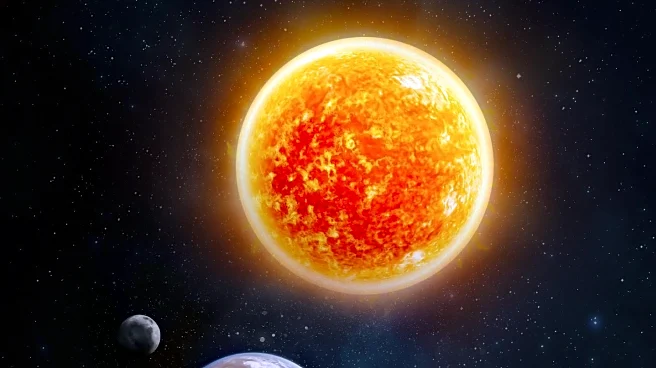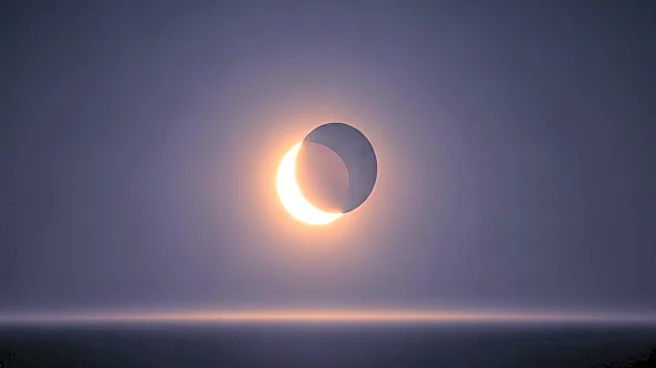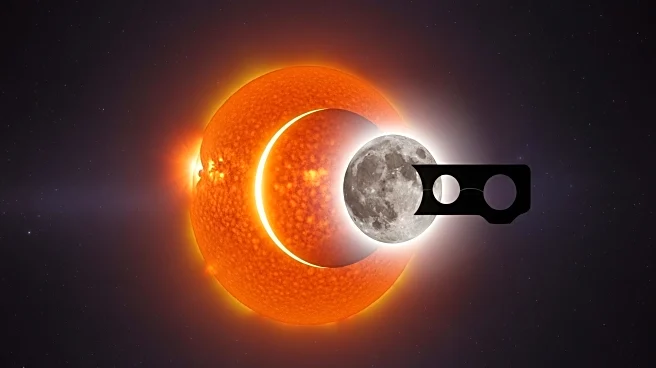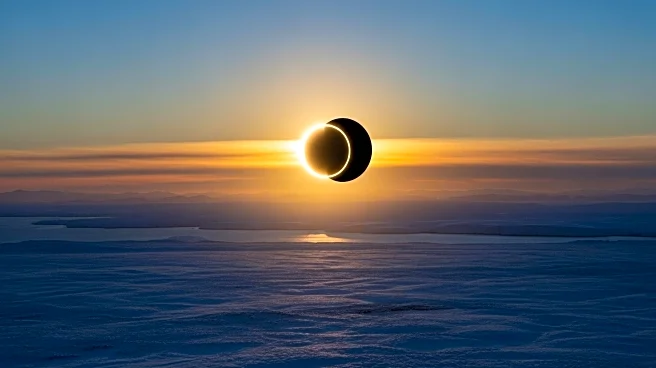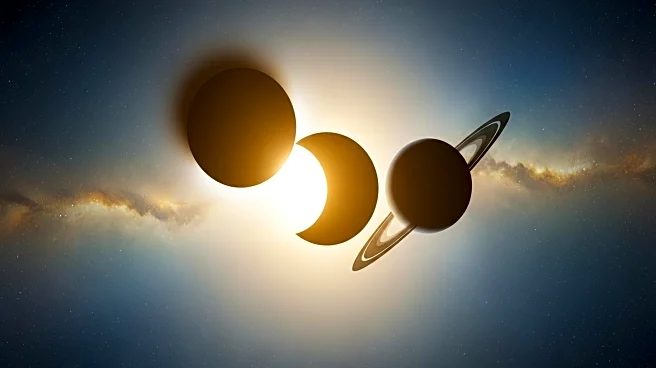What's Happening?
The last solar eclipse of 2025 is set to occur on Sunday night, September 21, 2025. This partial eclipse will not be visible from India but can be observed in parts of Australia, Antarctica, the Pacific Ocean, and the Atlantic Ocean. During a solar eclipse, the Moon passes directly between the Sun and Earth, casting a shadow and blocking sunlight. In this partial eclipse, approximately 85% of the Sun will be obscured in certain locations. The eclipse will begin at 10:59 pm IST (1:29 pm EDT) and end at 3:23 am IST (5:53 pm EDT) on September 22, with the maximum phase occurring at 1:11 am IST (3:41 am EDT). This event coincides with the autumnal equinox, marking the official start of fall in the northern hemisphere.
Why It's Important?
Solar eclipses are significant astronomical events that offer unique opportunities for scientific observation and public engagement. The timing of this eclipse, just before the autumnal equinox, adds to its interest as it highlights the Earth's position relative to the Sun. While not visible in the U.S., the eclipse's occurrence in regions like Australia and Antarctica may attract international attention and tourism. Additionally, eclipses often prompt cultural and religious practices, as seen in the suggested do's and don'ts for observing the event. These practices reflect the deep cultural significance eclipses hold in various societies.
What's Next?
The next solar eclipses are scheduled for February 17 and August 12, 2026, although they will not be visible from India. However, India will have the opportunity to witness a solar eclipse in August 2027. These future eclipses will continue to provide opportunities for scientific study and public interest. Observers and scientists will prepare for these events, potentially leading to advancements in understanding solar and lunar dynamics.
Beyond the Headlines
Eclipses often have cultural and spiritual implications, influencing practices and beliefs. The guidelines provided for observing the eclipse, such as meditation and avoiding certain activities, reflect the intersection of astronomy and cultural traditions. These practices highlight the broader impact of celestial events on human behavior and societal norms.

